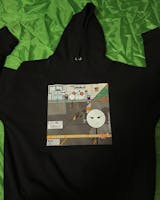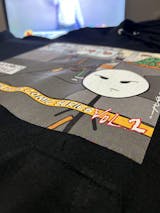Everyone can now choose how important digital printing is, especially the fabric produced. DTF has revolutionized printing, giving direction to the fashion industry with personalized solutions. Heat press and special inks produce durable and vibrant prints for their processes. Nowadays, sustainable and ethical practices in every production process are becoming more important. DTF transfer does not neglect to provide positive environmental conditions when producing fabric prints.
Environmental Concerns of DTF Printing
DTF transfer is a technique that offers versatile and vibrant prints. Although these features are seen as advantages, there are also some environmental concerns. At this point awareness comes into play. So, when using the printing technique, it is necessary to be careful to manage it well. Otherwise, environmentally damaging results are likely to occur.
Special products must be selected to reduce the environmental impact of DTF printing. Because most equipment used in the printing industry contains chemicals and is generally disposable. The best solution is to use biodegradable and non-toxic heat transfers. However, unfortunately, these transfers are not yet available on the market. Despite this, researchers are trying to develop environmentally friendly heat transfers. We know that when sustainable products and methods are used, the carbon footprint will be significantly reduced.
Ethical Approaches in T-Shirt Printing
Ethical approaches are very important in clothing production. DTF printing also shortens employees' working hours by adopting ethical approaches. Accordingly, it eliminates the risks of exploitative practices. It is generally preferred because it does not use equipment containing animal substances. Traditional printing methods use glue and ink containing animal materials. However, the equipment used in DTF printing is as vegan as possible. In this respect, it shows how ethical and fair a production process it adopts.
You can also choose custom DTF printing to produce t-shirts or other clothing prints. It can be one step ahead because it adopts production in line with fair labor and animal welfare. Making a conscious choice in the fashion industry is important in terms of encouraging others. Therefore, you can evaluate the positive features of this printing method by comparing it with other printing techniques.
What are Recycled and Sustainable Materials in DTF Printing?
It is possible to talk about many renewable and sustainable materials in DTF printing. First of all, let's talk about the importance of using these materials. Sustainable and renewable materials make a great contribution to nature and production. These materials used in DTF transfer are as follows:
- Natural and organic fabrics
- Bio-based inks
- Water-based inks
- Recyclable transfer films
Sustainable Practices in the DTF Sector
DTF printing is one of the printing techniques that takes a sustainable approach to multiple orders. Since it also has the ability to reduce waste, it minimizes damage to the environment. Since it reduces material waste, it both saves money and reduces the carbon footprint. In short, DTF printing supports sustainability in a variety of ways.
It also contributes to sustainability because it uses water-based inks. Inks containing chemicals take a long time to decompose in nature. Water-based inks are preferred in DTF transfer because they cause less damage. Therefore, with all these aspects, it is best to choose a technique that takes environmental impacts into consideration in the printing industry. You can do both your budget and the environment a favor by making your choice in this direction.
As a result, DTF printing produces a fair and sustainable garment, which puts it one step ahead of the rest. If you are a responsible and conscious consumer, you can use this printing technique. If you are a professional business and consider the environmental impact of clothing production, you can turn to DTF printing.








